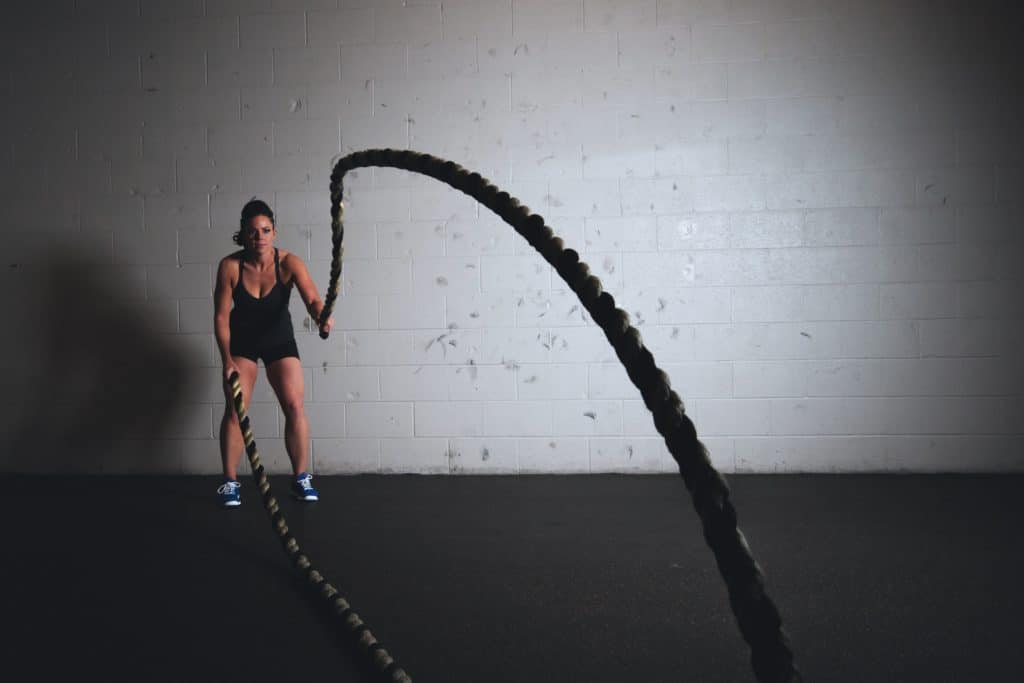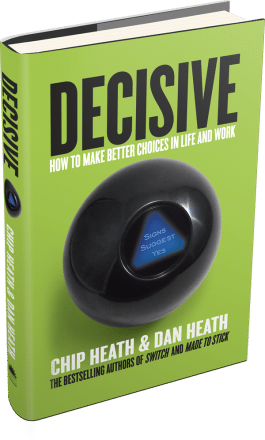“Our decisions will never be perfect, but they can be better. Bolder. Wiser. The right process can steer us towards the right choice. And the right choice, at the right moment, can make all the difference.” – Chip Heath and Dan Heath
Have you ever made a pros and cons list when faced with an important decision? Have you ever been told to “trust your gut?” I know I have. Unfortunately, these things rarely offer us the best way to make a decision. Fortunately though, while we may not always be the best at making decisions, with a process, we can be better.
So, by now I’ve discussed a handful of tools to help us make better, wiser decisions (Read part one here, part 2 here, and part 3 here). Instead of making decisions where we’re left anxious and uncertain afterwards, there is a solution. That solution is a process and one that is easy for us to WRAP our heads around. WRAP is an acronym that Chip Heath and Dan Heath created to provide an easy way of remembering this decision-making process. WRAP stands for:
- Widen Your Options (Blog 1)
- Reality-Test Your Assumptions (Blog 2)
- Attain Distance Before Deciding (Blog 3)
- Prepare to Be Wrong (Blog 3)
Focus On the Process
Even though the outcome of a decision matters (duh), having a process to follow when making decisions is equally important. A process steers us away from our own biases and overconfidence and towards wiser decisions. The act of following a process can instill confidence in the decision itself.
When we follow a process we are less likely to fall prey to the villains of decision making. Thinking of the process grants us awareness that in and of itself can be crucial. For example, just having awareness of not narrow framing a decision may be enough to help you consider other options. Simply having multiple options has been shown to increase the likelihood of a better decision.

This process doesn’t have to be followed in order either. We may start with “A” and loop back to “W” or “R” as needed. The important thing is having a process to ensure we explore other options, check our assumptions, get distance from our emotions, and prepare to be wrong. Let’s look at an example of how this process works in action.
Sarah’s Story:
Sarah Davis is a 37-year-old mother of two, a loving wife, and the owner of a small restaurant. She’s spent countless hours improving her restaurant over the years, and often at the expense of her health.
At this point Sarah knows a change needs to happen. She’s neglected her health to the point she doesn’t like looking in the mirror, and she’s started having lower back pain too. All she wants is to be able to wear a bathing suit without looking down on herself, and to play with her kids without being in pain.
Even knowing a change needs to be made though, Sarah isn’t sure where to start. When she discovers an online fitness program promising crazy results in just two few weeks, she feels hopeful. However, she’s stuck deciding between investing in the program or not (narrow framing). Her husband, realizing she’s thinking in black and white asks her, “Honey, what might you do if you CAN NOT do the online fitness program?” (The Vanishing Options Test). This gets her to think more openly (widen your options) and she remembers being successful in the past when working with a personal trainer.

After doing a little google searching she comes across a gym that offers small group personal training and it sounds intriguing, but she isn’t sure. She thinks, “This sounds great and all, but I just don’t know if this is right for me.” When she looks into the gym further though, she sees an offer on their website for a free week and decides to sign up for it (ooching).
After a few sessions at the gym, Sarah is left feeling optimistic about staying there, but still anxious about making the decision. Her husband then asks her, “Let’s say that you decided to join this gym. How would you feel about that decision 10 minutes from now? How would you feel 10 months from now? And how would you feel 10 years from now?” (Attain distance before deciding).
Sarah says in 10 minutes she’d feel relieved having made the decision, although still a little anxious. 10 months she would probably feel better about her looks and have less pain. 10 years from now she sees her self being able to keep up with their kids and doing activities she loves. Sarah also understands life has built in uncertainty though, so she decides to set a tripwire (Prepare to be wrong).
She feels she can trust the gym and its knowledgeable coaches, but she doesn’t know if she can trust her self to follow through with it. She declares that if she doesn’t make progress towards her goals in one year, then she can consider another option. Luckily for her though, she wound up finding a good gym, with even better people to support and guide her.
Power In the Process
Decision-making can be nerve-racking and anxiety-inducing, but it doesn’t have to be an awful experience every time. We can find hope in following a process. The right process followed consistently gives us confidence that we’re doing all we can to make an informed decision. And the right process helps us come to the best decision we can, in order to put ourselves in the best positions to be successful.
P.S. If you enjoyed this series of articles about making better decisions, then I can’t recommend enough picking up the book Decisive: How to Make Better Choices In Life And Work by Chip Heath and Dan Heath.
Source:

Decisive: How To Make Better Choices In Life And Work by Chip Heath And Dan Heath
